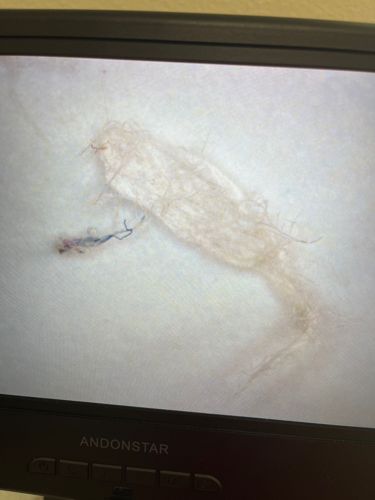Carpet Beetle Larva (likely varied, common, or black carpet beetle)
Scientific Name: Dermestidae (larva of various species like Anthrenus verbasci, Anthrenus scrophulariae, or Attagenus unicolor)
Order & Family: Coleoptera, Dermestidae
Size: Larvae typically range from 1 mm to 5 mm (0.04 to 0.2 inches) in length.

Natural Habitat
Indoors, commonly found in homes, museums, and warehouses. They prefer dark, undisturbed areas like under carpets, in closets, behind baseboards, and within stored natural fibers (wool, silk, fur, feathers).
Diet & Feeding
They are scavengers that feed on a wide variety of animal and plant-based products, including wool, silk, animal hair, fur, feathers, leather, dried meat, dead insects, pet food, and occasionally synthetic fibers stained with food or oils. They do not feed on synthetic fibers themselves.
Behavior Patterns
Carpet beetle larvae are slow-moving and tend to avoid light. They are often found in undisturbed areas. They molt several times as they grow, leaving behind shed skins, which are a common sign of infestation. The adults are small, oval-shaped beetles that often feed on pollen and nectar outdoors but can fly indoors to lay eggs on suitable materials.
Risks & Benefits
Risks: Primarily considered a pest due to their destructive feeding habits on natural fibers, causing damage to carpets, clothing, upholstery, and museum specimens. They can also exacerbate allergic reactions in some sensitive individuals due to their larval hairs or shed skins. Benefits: In natural environments, they play a role as decomposers, breaking down organic matter. They are also used in forensic entomology to determine time of death.
Identified on: 9/5/2025